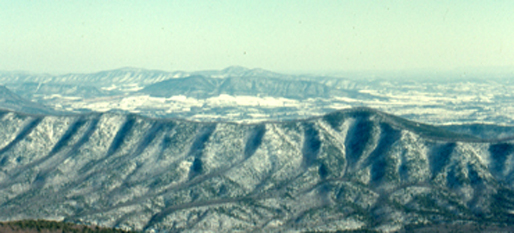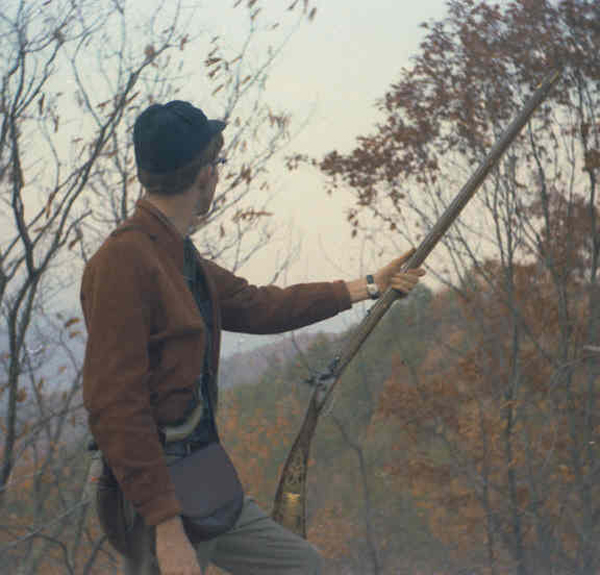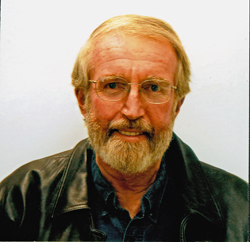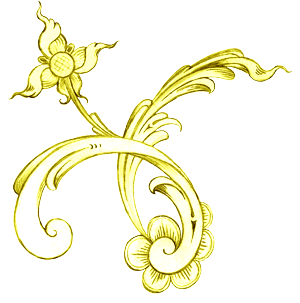









 |
|
Who is
Flintriflesmith?
Gary
Brumfield,
Master
Gunsmith,
Colonial
Williamsburg Foundation
1973-1990
Link to pictures of the
CWF gunsmith shop and
some guns made there.
Biographical sketch from
the Contemporary
Longrifle Association
Artisan Project
(updated 12/12/11)
Born in 1946,
Gary grew up in the
mountains just west
of Salem, Virginia.

View
from MacAfee's Knob,
a few miles from
Gary's
home.
In the 1950s that
part of Virginia was
still very much part
of the
rifle culture of the
18th century and
Gary began hunting
and target shooting
before age 10. At
that time, he lived
across a rural lane
from Wallace Gusler.
When Wallace's
father gave
him an original
percussion longrifle
Gary wanted
one too. Gary started
hunting with a
flintlock in 1959
and killed his first
buck with an
original .46 caliber
flintlock longrifle in 1962.
Gary finished
building his first
flintlock rifle in
about 1962—he had
started a percussion
half-stock in ‘58 or
‘59 but never
finished it. That
first rifle was
for a customer. His
second rifle (shown
below) was relief carved in the
style of the J. Hoak
rifle pictured in
Thoughts on the
Kentucky Rifle in
its Golden Age
[1960] and
had a shop made lock
that was largely
sawn from steel by hand.
The stock
architecture was
inspired by 19th
century eastern PA
rifles and the patch
box was based on
"Kettering, Allison
and Others" rifles
from the
Pittsburg/Ohio River
area. Talk about
an "fantasy rifle"
that combined styles
from different
regions and
periods--this was it!

Picture taken on the
trail to MacAfee's
Knob in the fall of
1964 showing first
rifle.
By December 1962, Wallace had
moved to
Williamsburg and
soon opened the Colonial
Williamsburg Gunsmith Shop.
As a student at
Virginia Tech from
1965 to 1969, Gary
spent his summers
working with Wallace
in the shop. In the
early years of the
shop, the two of
them spend a lot of
evenings
redeveloping the
skills and
technology of the 18th-century.
By the winter of
1967-8 Wallace was
able to document the
building of a
hand-made rifle in
the film
The
Gunsmith of
Williamsburg.
Gary missed being in
the film because it
was shot during the
winter while he
was away at school.
Gary graduated from
Va. Tech in March of
1969 and, after
working for about six months
in the shop,
enlisted in the
Army. He returned to
the shop in the
spring of 1972. Late
that
summer Wallace left
the shop and Gary
soon became the
Master. He worked
there building guns,
training apprentices
and talking to
thousands of
visitors. He has
described working in
the shop as “like
teaching school
except you start
over with a new
group of students
every 15 minutes.”
Since leaving the
shop in 1990, he has
been working in
administration for
Colonial
Williamsburg and has
built very few
rifles. When he
retires in a few
years, Gary expects
to become an active
builder again.
What educational
activities has he
participated in…
-
Instructor and/or
Coordinator for
NMLRA Gunsmithing
Seminar, Western
Kentucky University,
1983-2011-
Writer and editor
for the
Journal
of Historical
Armsmaking
Technology,
1985-1993
-
Member or Chairman
of the NMLRA
Publications
Committee, 1985-2010
Writer of several
articles for
Muzzle Blasts,
1985-present
Guest speaker,
various conferences,
titles include:
Craftsmanship in
Metal: the Colonial
Artisan and His Work;
Why Limit
Yourself to
Traditional Design
and Technology;
Surveying and Land
Acquisition in
Colonial Virginia;
Game and Hunting in
the 18th
Century;
Trust, Credit and
the Assignment of
Values in the Deer
Hide Trade,
Hunting For Food.
1976-present
What awards and
honors has he
received…
CLA Education Award,
2000
President, CLA,
2002-2004
NMLRA Service
Recognition for the
Gunsmithing Seminar,
2006
Distinguished
Service award
presented at
Western Kentucky
University by the
faculty and students
of the NMLRA Seminar, 2009
In what publications
has his work
appeared…
- Following the
Tradition:
Celebrating the
Artisans of the
Contemporary
Longrifle
Association by
Gordon Barlow, 2007
- Three
Centuries of
Tradition: The
Renaissance of
Custom Sporting Arms
in America by
Wallace Gusler and
Mark Silver, 2003
Contemporary
Makers of Muzzle
Loading Firearms
by Robert Weil, 1980
Iron, Solid
Wrought/USA,
1976
Virginia
Wildlife,
September 1973
(top)
|
|
|
|
|
|
|

